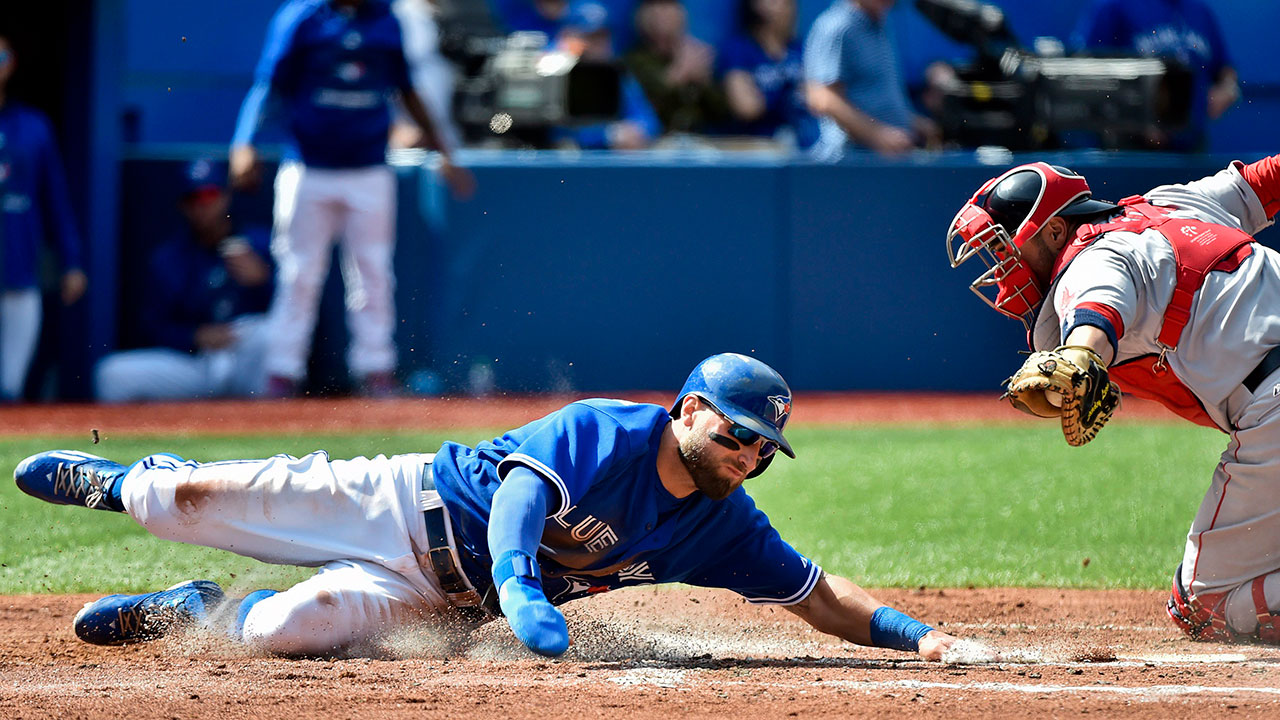Ever since the Toronto Blue Jays traded away Ben Revere, the question of who will lead off in 2016 has hung over the team. In recent days outfielder Kevin Pillar decided to throw his hat into the ring.
If teams built lineups based on player input no one would hit ninth, but the idea of Pillar hitting first does warrant consideration. After all, he demonstrated the traditional leadoff profile last season with a solid batting average and 25 stolen bases.
The most obvious rebuttal to putting Pillar at the top of the order is that he’s an aggressive hitter who rarely walks, and as such his on-base percentage is uninspiring. This is an important point, and the main reason he’s likely to stay low in the order, but there’s more to the story.
As counter-intuitive as it may seem, hitting leadoff would hamper Pillar’s ability to be a threat on the bases. The problem, if it’s fair to describe it as a problem, is the Blue Jays’ 2-4 hitters are too good to run in front of. The cost of making an out is so much higher than the value of an extra base, so it’s hard to justify taking off.
By virtue of sitting at first base you are in scoring position with Josh Donaldson, Jose Bautista and Edwin Encarnacion coming to the plate. The trio combined for 226 extra-base knocks last year, 48.5 percent of their hit total. If you can score from first on about half the hits of the guys sitting behind you, taking second becomes less of a priority.
Revere experienced this phenomenon during his time in Toronto. Even though he is one of the top base stealers in the game, he found himself running significantly less frequently with the Blue Jays.
| Time Period | SB Attempts | SB Attempts/Game | SB Attempts/162 Games |
|---|---|---|---|
| 2015 with Phillies | 29 | 0.302 | 48.9 |
| 2015 with Blue Jays | 9 | 0.160 | 25.6 |
| Career | 218 | 0.334 | 54.8 |
Stealing in front of baseball’s top triumvirate of sluggers usually isn’t a worthwhile exercise. Putting Pillar there would likely limit his base-running ambition.
That’s a significant issue because last year the 27-year-old quietly created a great deal of value with his legs. His highlight-reel catches got all the attention, but Pillar ranked 12th in the majors in steals with a tidy 86.2 percent success rate on stolen base attempts. According to FanGraphs his work on the bases was worth 8.1 runs above average, putting him behind only Billy Hamilton and Mookie Betts league-wide.
It was a pretty surprising performance for a player with one career stolen base in 89 major-league appearances prior to 2015. But to be fair, Pillar had swiped as many as 51 bags in a single minor-league season before, so it was a matter of adjusting to the MLB level rather than learning a completely new skill.
If the Blue Jays want their centre fielder to continue this baserunning breakout, they are best served placing him lower in the lineup. Hitting in front of players like Ryan Goins changes the risk-reward algebra of stealing significantly.
Outs aren’t as valuable when a less dangerous hitter is at the plate, and the type of guy who hits eighth or ninth is usually much more likely to hit a single than an extra-base hit. Advancing ninety feet means more and getting caught costs less.
That’s the ideal situation for an up-and-coming base stealer, and that’s where the Blue Jays can get the most out of Pillar’s legs.

